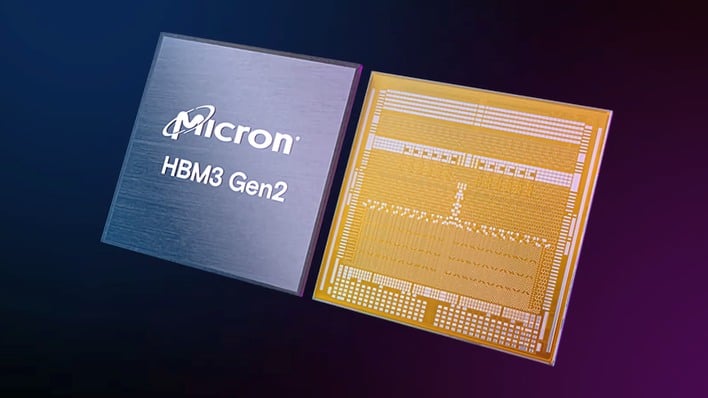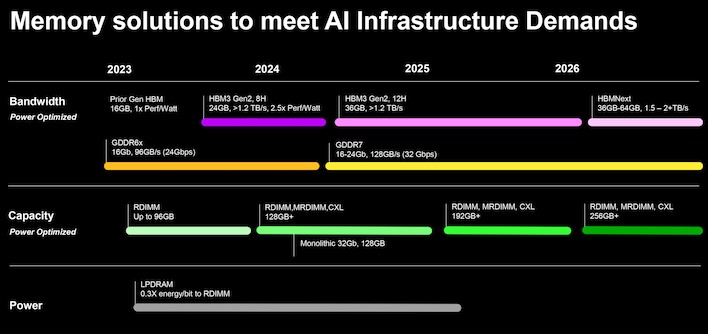Micron Claims World’s Fastest HBM3, Teases DDR5 Chips That Could Support 1TB Modules

This ain't your usual GDDR; with five stacks of HBM3 Gen2 you'd be looking at 5,888 GB/second of memory bandwidth for a single GPU. While it originally debuted on AMD's Radeon R9 Fury graphics cards, these days High Bandwidth Memory (HBM) is exclusively used on datacenter-class hardware, like NVIDIA's Hopper GPUs, Intel's Data Center MAX series CPUs and GPUs, and AMD's Instinct accelerators. As a result, your typical PC gamer nerd probably won't get too excited about this announcement (although we have to admit it's still awesome).
Emphasis ours
Instead, arguably more exciting is a single line buried at the end of the press release like a footnote. Talking about its other advancements, Micron mentions first its 24Gb memory enabling 96GB DDR5 memory modules, and then casually notes that it plans to have 32Gb DDR5 chips shipping in the first half of next year.
DRAM ICs with 32-gigabit capacity means 128GB DDR5 UDIMMs for your regular desktop users, which are on Micron's roadmap below. How about 512GB of RAM in a Ryzen 9 7950X system? Server gurus are likely even more excited, because really, how often do you need more than 128GB of RAM in a desktop? Datacenters are always hungry for more and more RAM, and using 32Gb ICs, Micron could feasibly fabricate MRDIMMs in capacities up to 1TB.
According to the aforementioned roadmap, the company's being conservative with its plans, though, at least for now. The highest-capacity modules Micron plans to make anytime soon are 256GB, and those aren't expected to arrive until 2026, alongside "HBMNext" memory that will apparently offer as much as 64GB capacity and 2+TB/second per stack of RAM.
Micron also seems to be committed to mass-producing GDDR7 memory at transfer rates up to 32 Gbps. It's interesting to see, especially in the face of the other news story from earlier today about NVIDIA possibly shipping a 512-bit memory interface on its next-gen GeForce flagship. Micron apparently won't have the new graphics memory available until late next year, but we haven't even seen any products using the fastest 24-Gbps GDDR6X memory, so perhaps we're getting ahead of ourselves.



